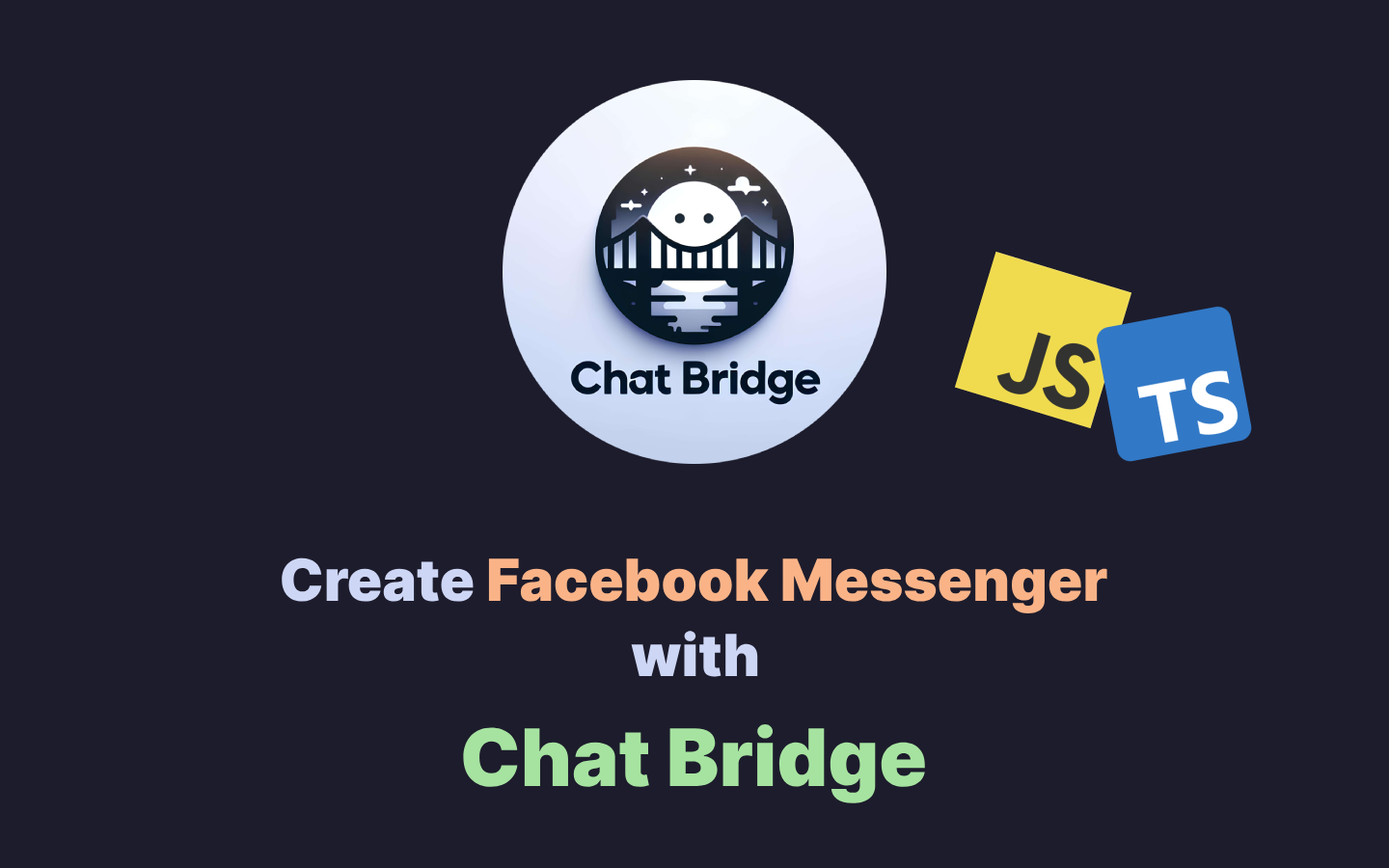January 10, 2024
Create a simple Facebook Massager Chatbot with Chat Bridge
Learn how to build a Facebook Messenger chatbot using Chat Bridge and Node.js. Simplify the process with easy steps and start chatting!

Have you ever wanted to build your own Facebook Messenger chatbot but found the process intimidating? Fear not! In this tutorial, we'll guide you through creating a simple Facebook Messenger chatbot using Chat Bridge and Node.js. Chat Bridge is an easy-to-use library that simplifies the development of chatbots by providing a bridge between different messaging platforms.
What is Chat Bridge?
Chat Bridge is a versatile Node.js library designed for developing bots that seamlessly interact with the Facebook Messenger Platform. Boasting a straightforward API for sending and receiving messages, along with an efficient webhook implementation, Chat Bridge simplifies the process of building powerful and responsive chatbots.
- GitHub Repo: Chat Bridge
- Documentation: Chat Bridge Docs
Getting Started
Before diving into the tutorial, make sure you have Node.js installed on your machine. If not, you can download it from nodejs.org.
Step 1: Install Chat Bridge
Start by installing Chat Bridge using npm:
npm install chat-bridge
Step 2: Set Up Your Facebook App
To create a Messenger chatbot, you need a Facebook App. Follow the official Facebook documentation to create one.
Step 3: Implement Your Chatbot
Now, let's create a simple chatbot using Chat Bridge. Copy the following code into your preferred Node.js environment:
// Import the Client class
const { Client } = require('chat-bridge')
// Create a new client instance
const client = new Client({
accessToken: 'YOUR_ACCESS_TOKEN',
verifyToken: 'YOUR_VERIFY_TOKEN'
})
// Listen for incoming messages events
client.on('message', event => {
const { sender, message } = event
// Send a text message back to the sender
client.sendTextMessage(sender.id, `You wrote: ${message.text}`)
})
// Start the client
client.start(async () => {
console.log(`Listening on ${client.page.name} (${client.page.id})`)
})
Replace 'YOUR_ACCESS_TOKEN' and 'YOUR_VERIFY_TOKEN' with the respective access token and verify token obtained from your Facebook App.
Step 4: Run Your Chatbot
Save the file and run your Node.js application:
node index.js
Now, your chatbot is up and running, listening for incoming messages on your configured Facebook page.
Conclusion
Congratulations! You've just created a simple Facebook Messenger chatbot using Chat Bridge and Node.js. This is just the beginning; you can enhance your chatbot by adding more features, handling different types of messages, and integrating with external APIs.
Explore the Chat Bridge documentation for more advanced configurations and features. Happy coding!